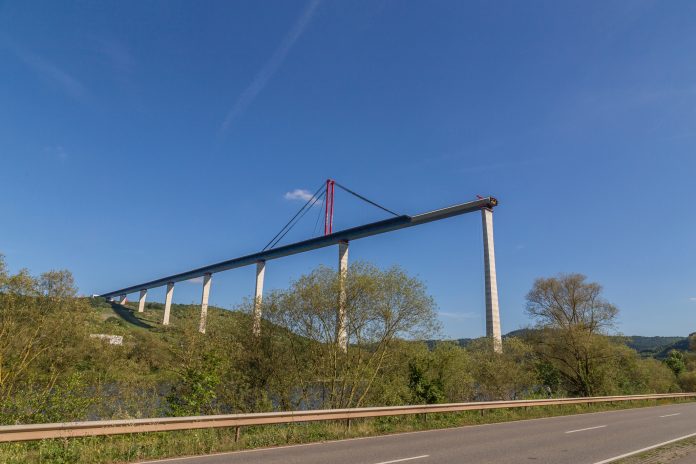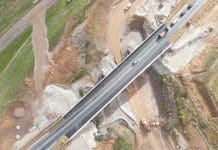HS2 is using OptiStruct®, a technology originally designed for automotive and aerospace structures to reduce embedded carbon across the project
The tool can reduce embedded carbon in HS2’s viaducts by up to 10%. OptiStruct® can also cut viaduct design time from around a month to as little as one hour.
HS2 has been working with Altair Ltd, a Leamington Spa-based software developer, to create a unique, automated civil engineering design process driven by its software tool, OptiStruct®.
Traditional viaduct design processes can take up to four weeks as geometric and material factors need to be calculated manually. Once set, there is virtually no opportunity for the viaduct to be redesigned due to tight project delivery schedules.
Cutting raw materials and embedded carbon
OptiStruct® has allowed the HS2 collaboration team to redefine their processes for civil engineering. OptiStruct® is the same technology used by Altair for components and assemblies within aircraft and automotive vehicles. As well as saving time, the software can also minimise the amount of raw material needed for construction projects.
“Our innovation project with Altair is a game-changer. It gives engineers a tool to explore alternative designs that were not previously feasible due to time constraints. By cutting development time, automatically running dozens of combinations of the design variables, the technology allows to identify solutions that minimise embedded carbon,” said Tomas Garcia, head of civil engineering structures at HS2.
Streamlining viaduct design
Engineers can use the technology to modify viaduct design, providing more flexibility. For example, engineers can increase the length between supporting piers and decrease the overall number of piers required.
The software considers the viaduct’s operational requirements, such as speed, frequency, and braking load. It then runs millions of design iterations based on the physical properties of the building materials, such as concrete and steel, to produce the best possible design.
As part of HS2’s development, several large viaducts are being installed across the country. For example, a new 150-meter viaduct, which will serve as the pathway for trains leading into Birmingham’s upcoming Curzon Street Station, was recently approved by Birmingham City Council. This viaduct will be the tallest structure in a series of viaducts along HS2’s route to Birmingham.
“To help build HS2, we are drawing on the technology developed for other industries to help deliver the new high-speed rail network and add value to UK plc by creating new opportunities for innovative companies outside civil engineering,” said HS2’s senior innovation manager, Charlotte Hills.
“Working with Altair as part of our Innovation programme demonstrates the benefits of applying its technology to building HS2 and the potential it offers in the long term as an integral tool to streamline structural designs and reduce embedded carbon by as much as 10%,” she concluded.



![[VIDEO] HS2 completes 4,600-tonne viaduct slide across M6 The HS2 team completed a 17-hour long operation sliding the viaduct structure across the M6 without closing the motorway](https://www.pbctoday.co.uk/news/wp-content/uploads/2025/12/M6-South-viaduct-slide-taking-place-across-a-live-motorway-December-2025-218x150.jpg)


![[VIDEO] Heathrow’s third runway plan wins out over Arora London, United Kingdom – May 31, 2023: A commercial airliner taking off at London's Heathrow Airport, representing plans for a third runway](https://www.pbctoday.co.uk/news/wp-content/uploads/2025/11/iStock-2143084103-218x150.jpg)





![[VIDEO] HS2 celebrates final boring tunnel breakthrough The 125-metre-long tunnel boring machine was launched in March 2024 and arrived at Washwood Heath yesterday morning (13 October)](https://www.pbctoday.co.uk/news/wp-content/uploads/2025/10/HS2-staff-engineers-and-tunnellers-gather-in-front-of-the-Bromford-tunnels-after-the-breakthrough-of-Elizabeth-Oct-2025-218x150.jpg)

![[VIDEO] HS2 M6 viaduct slide completed early The HS2 M6 Viaduct on its sliding journey](https://www.pbctoday.co.uk/news/wp-content/uploads/2025/09/M6-viaduct-East-Deck-in-place-over-the-motorway-September-2025-218x150.jpg)